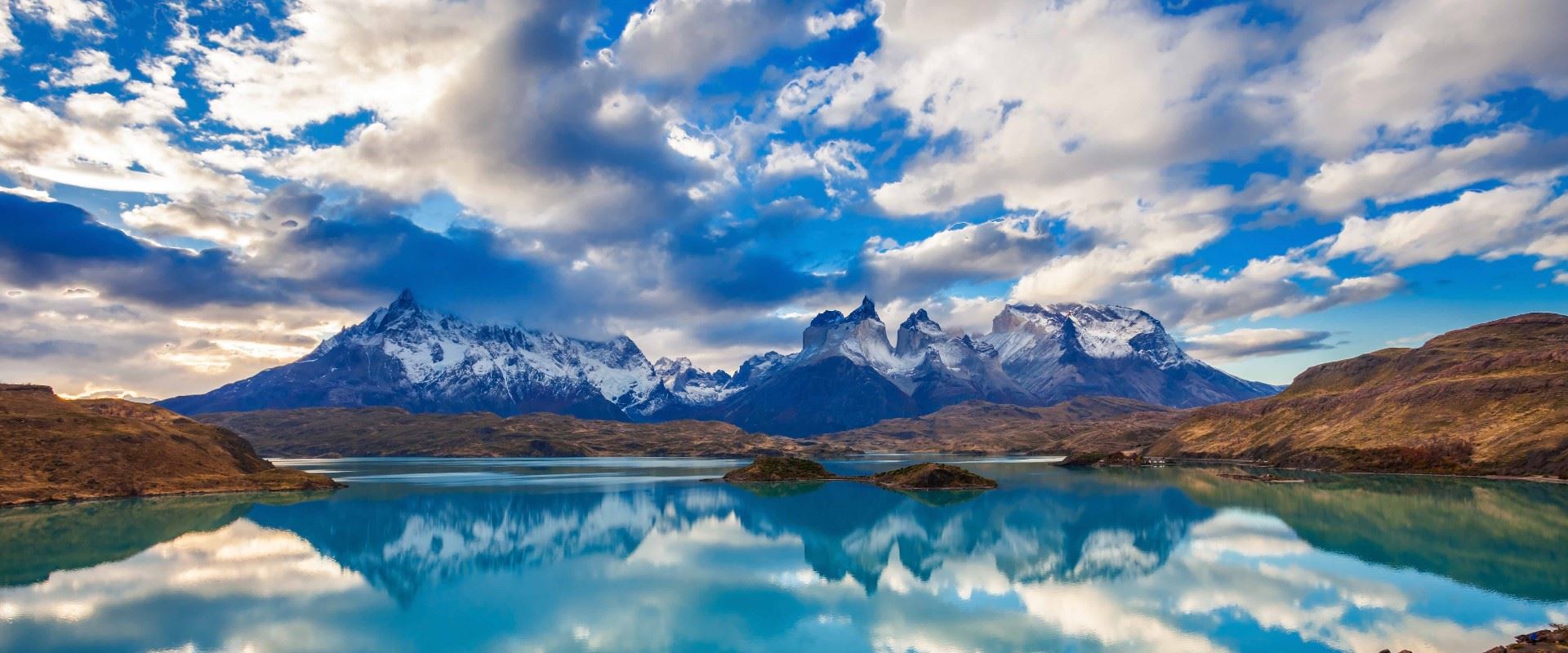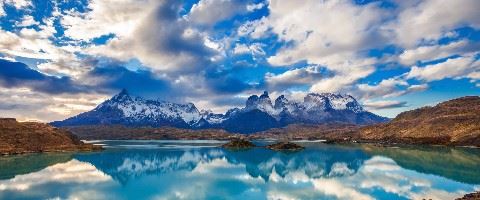Wedged tightly between the Pacific Ocean and the Andes Mountains, Chile could justifiably claim to be South America’s most beautiful country. The superlatives don’t end there. It’s also not so much the world’s longest country but its slenderest – along its 2,653-mile length Chile’s width averages 110 miles east to west. Cradled within its distinctive shape is a breathtaking array of scenery and climatic extremes including the world’s driest desert, its southernmost city….and its largest swimming pool.
Prosperous and (now with the dark days of dictatorship behind it) stable, today Chile clearly ranks as a ‘success story’. Largely colonised in the 16th century by Spain, its peculiar isolating geography nonetheless made it something of an outpost whose frontiers were regularly menaced by both indigenous tribes in the south and European rivals from the sea.
Most of Chile’s population inhabit its central and south-central regions. Framed by the spectacular snow-clad ramparts of the Andes, the capital Santiago is a handsome city with a picturesque colonial-era old quarter. Amongst the rolling hills of its hinterland and beyond lie pretty, temperate valleys hosting extensive vineyards. Although introduced by the Spanish, the country’s notable success as a wine-producer is a recent phenomenon.
Down on the nearby Pacific coast, Valparaiso – a port city, so-called ‘Jewel of the Pacific’ and now a UNESCO World Heritage Site – exudes an almost bohemian charm. Remarkable rainbow-hued painted houses cling to a cluster of hills scaled by quirky funiculars and threaded with narrow lanes. It’s also home to (of course) the world’s oldest continuously-published Spanish-language newspaper.
Yet Chile’s real drama lies in its remote far-flung corners. The north is dominated by the otherworldly Atacama Desert with its extraordinary Martian-like landscapes, bizarre salt-flats and geyser fields. Beautiful river-fed lagoons are home to a rich variety of birds, especially flamingos. Further still on the border with Bolivia lies Lauca National Park where llamas and alpacas graze in the shadow of enormous cone-perfect volcanoes.
Well south of Santiago and centred on Puerto Varas, Chile’s celebrated ‘lake district’ offers a more bucolic idyll – not merely pristine lakes, waterfalls and forests but a striking volcano whose slopes offer skiing or snowboarding. Nearby Chiloé Island seems a world apart, its unique top-to-bottom timber churches now a World Heritage Site and a wild north-western coast proving a magnet for marine fauna such as whales, dolphins and penguins.
The wildest region of all occupies the heavily indented and curving southern tip. Fjords, glaciers, mountains and seemingly endless steppes distinguish the region of Patagonia (which is shared with Argentina), its epic scenery and grandeur distilled to perfection in the iconic rock-towers and lakes of Torres del Paine National Park.
Remoter still – just over two thousand miles away into the Pacific – lies treeless Easter Island with its enigmatic moai, monolithic statues of the islanders’ deified ancestors.
Chile holidays at a glance
- Many parts of the country can be explored all year round. Best time to visit the far south is between November and April (Patagonia)
- Internal flights are essential to maximise your stay
- Great food and wine
- Atacama - explore the moonscape of the world’s driest desert
- A labyrinth of fjords and channels
- Volcanoes and snow-capped mountains
- Torres del Paine National Park - combines ancient forests, lakes, fjords, glaciers, mountains and colossal granite towers
- Easter island - one of the most remote inhabited islands in the world with a Polynesian feel. Marvel at the giant stone statues. UNESCO World Heritage site
- Cruises from Punta Arenas (Chile) to Ushuaia (Argentina)








